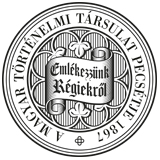Századok – 2001
TANULMÁNYOK - Kubinyi András: Ernuszt Zsigmond pécsi püspök rejtélyes halála és hagyatékának sorsa. (A magyar igazságszolgáltatás nehézségei a középkor végén) II/301
358 KUBINYI ANDRÁS by dividing it by ten we may come closer to the truth. Canon Cupi died in 1502, and in his testament he returned 7.000 florins from the money once misappropriated. If several years after the bishop's death the less important among the culprits still possessed such an amount, he must have acquired more, and his accomplices even more. The reconstruction of the case is not easy. János Ernuszt began his lawsuit relatively late, and in the presence of the archbishop of Esztergom as papal legate. But the parliament intervened and transferred the case to the royal court, where it was to be heard by the famous lawyer, István Werbőczy, head of the king's personal presence. Yet in 1517 the latter relegated the case back to the archiépiscopal court, with the argument that it would never have time (!) to deal with it. In the next year the archbishop's auditor did make a judgment, which accepted the truth of most of the accusations, but both the plaintiff and the defendants appealed to the pope. This time it was the king and his council who intervened by prohibiting the parties from proceding at the papal court and reserving the judgment for themselves. But no judgment was ever proclaimed. In 1536 János Ernuszt's son, Gáspár, lodged a complaint once again in the papal court against the heirs of Gyulai and Szerecsen, but he died before the suit came to an end. With his death the whole Ernuszt family disappeared. During the whole case an important but rather obscure role was played by the great lawyer, István Werbőczy. He sometimes took sides with the defendants, sometimes wanted to confiscate the whole heritage for the crown (ultimately in 1521). In order to come to a better understanding of the case it seemed necessary to deal in detail with the three families concerned. János Ernuszt, the younger brother of the late bishop Zsigmond, was obviously not one of the most brilliant minds of the country, but he was a man of wealth and contracted good marriages. In the middle of the 1510s, when he pursued his lawsuit with the greatest intensity, he was related to many of the barons sitting in the royal council through his wife. The two defendants belonged to the politically most active elite of the wealthy nobility. Members of their families augmented their wealth in the service of powerful barons, and were related to many of their social peers. Some of their kinsmen — e. g. the brother of Lajos Szerecsen —• were elected assessors in the royal council delegated by the county nobility. Werbőczy himself was one of the leaders of the nobility One of the defendants, Lajos Szerecsen, was deputy judge royal {jusex curie) and as such the patron and close friend of István Werbőczy, then protonothary, at the time of the death of bishop Zsigmond. We have seen that the nobility which attended parliament and was opposed to the barons took sides with the defendants several times. Thus the moral of the story could be summarised as follows: despite an administration of justice which basically functioned smoothly and effectively, the case could not be settled definitively because of the underlying political factors. The two parties enjoyed relatively equal political support, which led to a stalemate in the royal council. It may have because of this that Werbőczy, who intermittently abandoned his political allies, sometimes looked for a third solution: namely to reserve the heritage for the crown and spend it on the defence of the southern borders.
